DIY dishwasher repair
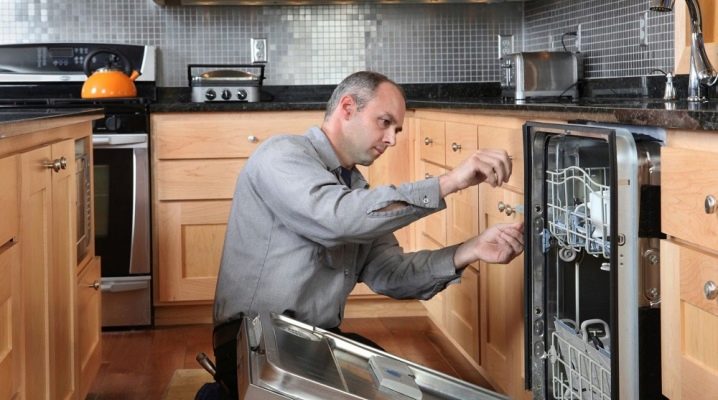
Every owner of such equipment once thinks about the possibility of doing a dishwasher repair with his own hands. Indeed, in most cases, it is possible to understand why it does not work normally, for what reasons it draws water, but does not wash it, diagnose other malfunctions without calling the master. You just need to pay attention to those failures that can be detected during the operation of the device.
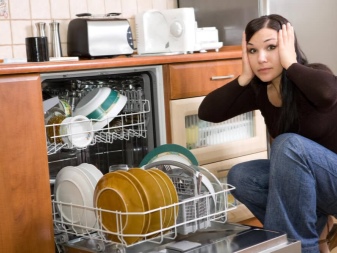
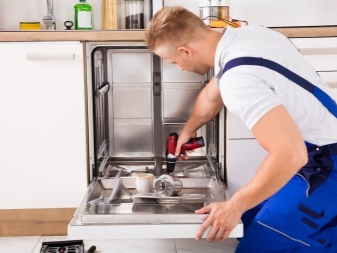
Why does the machine wash badly?
Among the malfunctions of the dishwasher, which are quite easy to fix with your own hands, one can single out a decrease in the quality of the appliance. This is expressed in the appearance of whitish streaks and streaks on the walls of the dishes. Glasses and other glass objects do not acquire crystal clearness after being removed from the grid, they remain cloudy. Violation of the rules for operating the equipment can become the cause of problems. But much more often the fault is simply a poor selection of detergents.
In addition, a decrease in the quality of washing is always observed if the filters of the machine are dirty, clogged with dirt and debris.
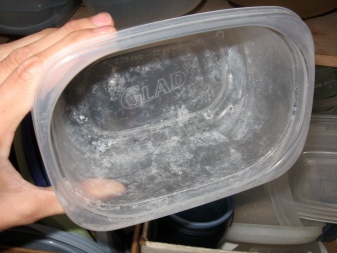

Getting started troubleshooting, you need to act in stages, according to the following scheme.
- Inspect the dishwasher.
- Empty her tank. Remove baskets and other third-party components.
- Unscrew filters from mountings.
- Dismantle the spray arms.
- Clean them thoroughly, rinse with running water, brush.
- Remove the filter mesh from the supply hose. If it is dirty, during rinsing, the water pressure weakens, the dishes are not washed thoroughly enough.
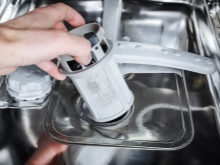
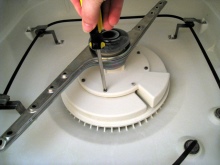
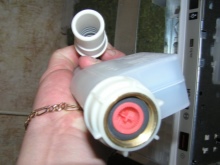
With all the parts in place, you can proceed to investigate other possible causes of deterioration in the performance of the device. For example, check the rinse aid container. If it is over, glass and ceramic dishes will remain with white streaks of powder during washing. Similar problems arise if a universal rather than a specialized product is poured into the container.
It is worth carefully studying the recommendations of a particular manufacturer on the choice of compatible chemicals, and not violating them during the operation of equipment.
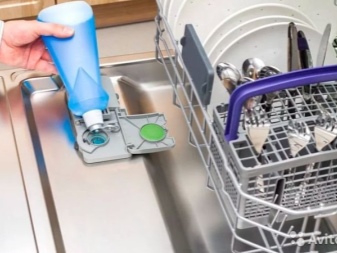
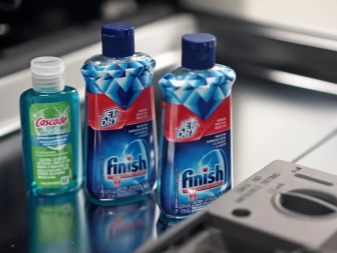
If the dishes are heavily soiled, it is necessary to pre-treat the stubborn soiling by hand. The order of laying is also important. For example, place only cups and glasses in the top tray. The lower basket is intended exclusively for large dishes, the middle basket is for plates. Violating this order, it should be understood that the quality of washing will necessarily deteriorate.
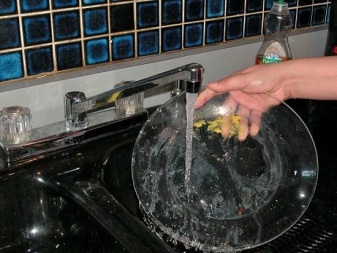

What to do if there is water inside the case?
When you first discover small puddles of moisture inside the washing chamber, you should not be intimidated. The water can actually stay inside. Moreover, it is absolutely necessary to maintain a normal microclimate inside the device. This allows the rubber bands to stay elastic longer. If a small puddle turns into a whole sea, the liquid is cloudy, with food debris, the problem will have to be paid more attention.
One of the following malfunctions may cause the water in the sump to stagnate.
- Incorrect connection of the outlet hose. If it is too high, you will have to solve the problem with the movement of the bend. It should be reduced by 35-40 cm from the previous position. After that, you can start the machine in test mode.
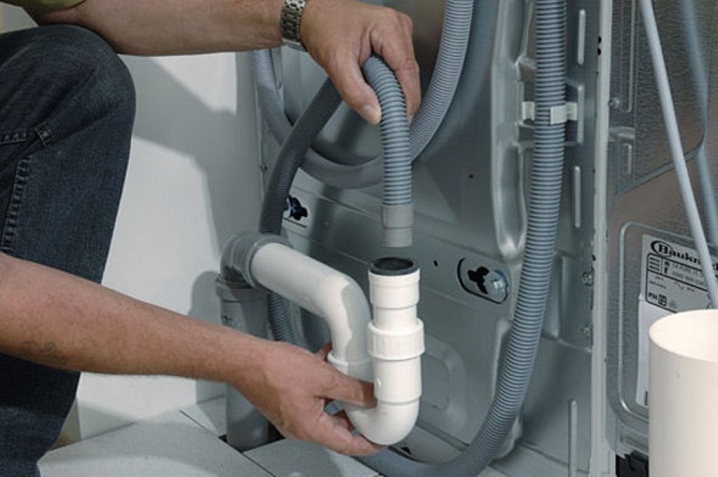
- Blockage. It is associated with a clogged water filtration system.It is enough to clean it for the problem to be solved. In the future, you need to repeat these steps every 7-14 days.
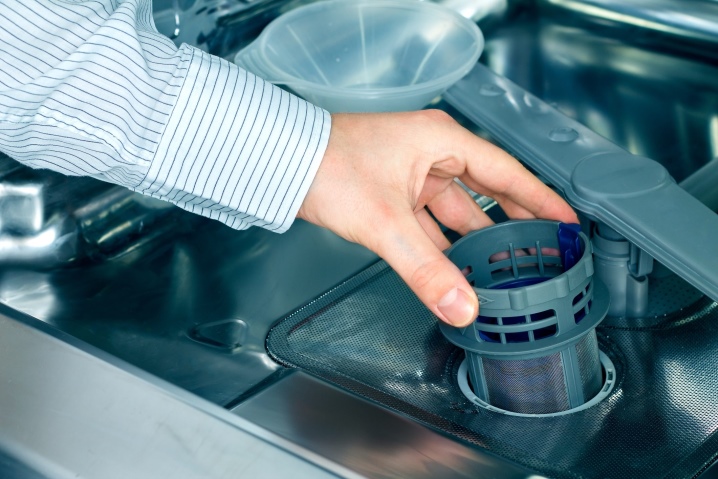
- Broken pump or water level sensor. In this case, it will be difficult to cope on your own. It is better to entrust the replacement of parts to the specialists of the service center.
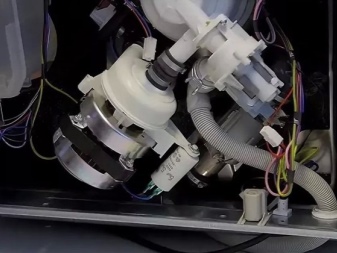
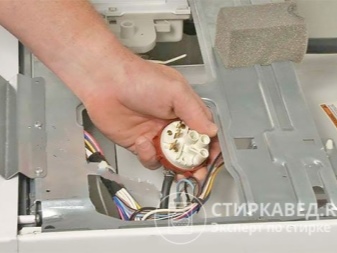
If the car is not under warranty, and the breakdown was due to a pump (pump) or water level sensor, you can buy spare parts yourself. They are original or copied - such options are made in Asian countries. They are cheaper, but they do not guarantee regular operation of the equipment in the future.
Turns off permanently: solution to the problem
One of the most unpleasant malfunctions of dishwashers is their sudden shutdown. This failure usually occurs at the beginning or in the middle of the cycle. If such a defect in the operation of the equipment is detected only once, the cause may be a short-term failure in the program or a power surge. You can fix the problem by using a special stabilizer to connect the equipment to the network.
If the dishwasher turns off constantly, the power supply system is the source of the problem. You can deal with this phenomenon in different ways. The first thing to take care of is restarting the machine. To do this, just press and hold the power button for 20-30 seconds. If the current can be stabilized, the dishwashing process is successfully activated.
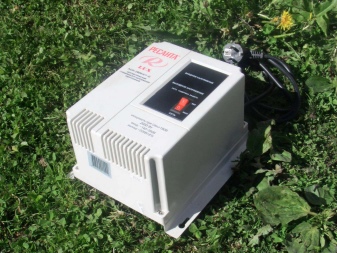
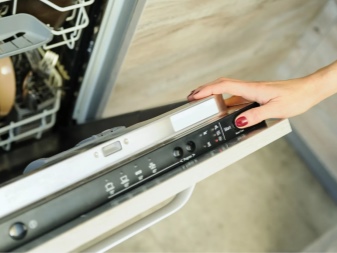
In order to avoid possible "leaks" and power outages, it is enough just to properly organize the connection of equipment. On the way from the outlet to the case, it is better not to use various wiring elements or choose models equipped with a fuse. Sometimes the frequent shutdown of the machine is associated with a breakdown of the heating element - in this case, the water will not be heated either. The heating element can be damaged by limescale deposits and burn out due to power failures. The solution to the problem in this case will only be the replacement of the part.
If all these measures do not help, it is worth checking the program block. In dishwashers, it is he who most often suffers from voltage surges. Failures in this case will be permanent.
It is worth calling a specialist who will reinstall the software or offer to replace the damaged part of the device.
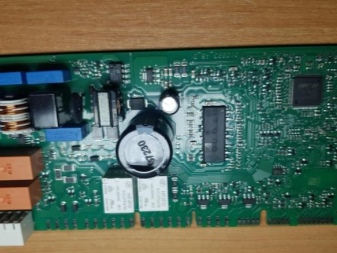
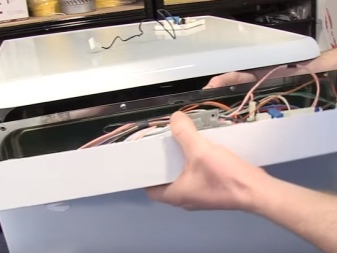
Other malfunctions and their elimination
Self-repair of a dishwasher always begins with tracking all the cycles of the appliance. This is the only way to reliably identify the reasons why one of the functions broke down. For example, if the inlet valve does not work, the equipment constantly draws and drains water. Sometimes it is possible to fix such a breakdown only by looking at the water meter. With an incessant set, it will work very actively, like the pump inside the case.
It is much easier to diagnose a violation of the insulation of the case. In this case, when touched, the equipment connected to the network quite noticeably shocks. It is better to entrust the diagnostics of the breakdown site to professionals. The actions will be similar in case of a breakdown of the control module board. You can repair yourself only those faults that do not require the use of specialized equipment. In other cases, especially if the equipment beeps, makes noise, shows other signs of abnormal operation, it is worth suspending its operation, contacting the service, where they can diagnose and repair the equipment without risking aggravating the problem.


Unregulated drain
One of the signs that the equipment is simply constantly collecting and draining water is a noticeable deterioration in the quality of cleaning the dishes. At the same time, outwardly everything happens in a regular mode: the motor is running, water is poured and drained. But instead of starting the wash cycle, a completely different process takes place. Freshly collected water is also quickly discharged into the sewer. You can detect such a leak if you control the consumption of liquid - the meter will show that this indicator is constantly increasing.
The cause of this problem is a broken valve at the water inlet. If it is defective, the fluid supply continues even when the maximum allowable level is reached.
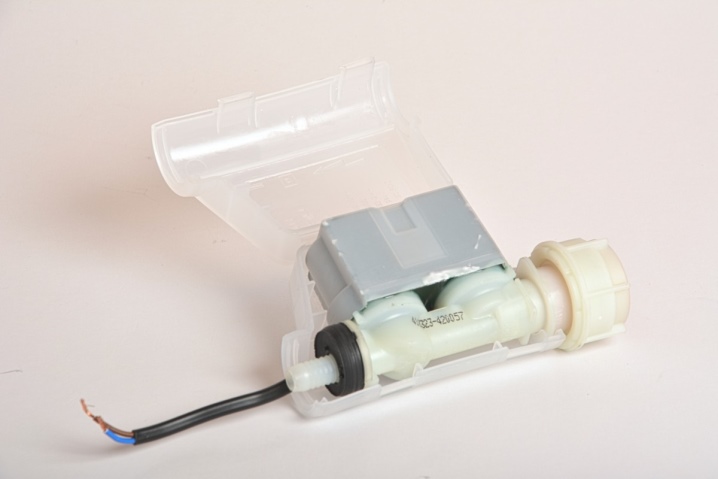
Automation fixes the overflow, then starts the pump to drain. The procedure for eliminating the problem in this case will be as follows.
- Turn the valve responsible for shutting off the water supply.
- Wait until it is completely drained. De-energize equipment.
- Get to the inlet hose. Remove it, disconnect the installed filter.
- Check the function of the intake valve. This is done using a multimeter. If the resistance indicators differ from the standard values (from 500 to 1500 ohms), the part will have to be replaced.
It is possible to reinstall the inlet valve on your own only if the person has experience in soldering parts. It is important to understand that any errors in tampering with the electrical circuit involved in supplying the device with power can lead to more serious damage.
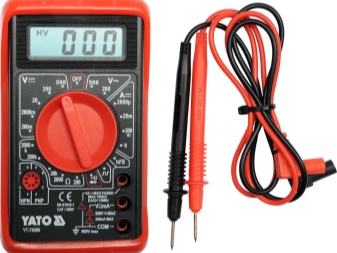
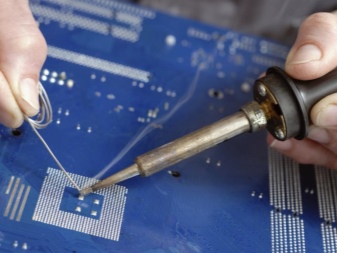
Does not dry dishes
One of the main advantages of a dishwasher can be considered a full cycle of necessary procedures - from rinsing to drying dishes. If one of these steps fails, the appearance of the plates and glasses suffers. For example, an incomplete drying process will result in streaks, stains and streaks on the surface.
You can figure out why the equipment works in an abnormal mode on your own. Most dishwashers use condensation drying, which occurs due to the release of heat from the cooling body of the appliance.
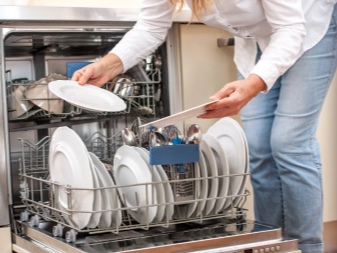
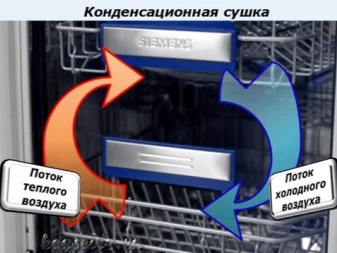
If this happens too quickly, the water droplets will evaporate slowly, leaving traces. In this case, the drying process is activated by simply opening the flap of the equipment. The reason for the low temperature of the water and the case is solely the failure of the heating element, the temperature sensor - their replacement will completely solve the problem.
When using a turbo dryer in more expensive models of machines, a broken fan becomes the source of ugly stains on the dishes. It is he who pumps hot air inside the case. Drying will resume in normal mode only after replacing the fan with a working one.
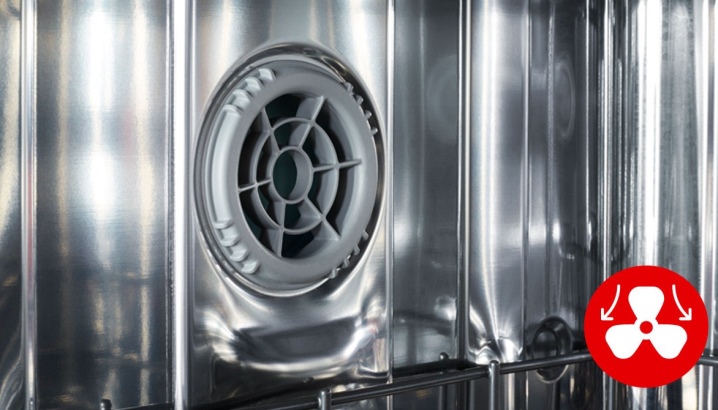
Buzzing when working
Immediately after installing the dishwasher, the owners usually rejoice at every sound from the appliance case. But if over time the equipment began to hum a lot, you will have to take the noise more carefully. The most common source is a broken bearing mounted on a circulation pump. Over time, it greatly loses its strength, collapses, and requires replacement. The order of work in this case will be as follows.
- Disconnect the device from the mains.
- Remove the pallet.
- Loosen the clamps holding the pump. Remove it from the mount.
- Separate wires and pipes.
- Disassemble the pump by first removing the heater, then the armature and impeller.
- Find the bearing. Remove it and the gasket. Replace with new consumables.

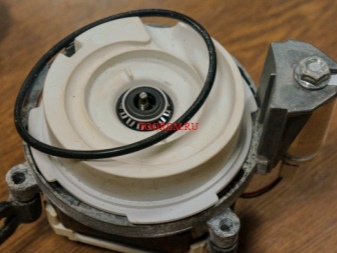
It is necessary to repeat the actions to renew the bearing during the active operation of the equipment at least once every 3-4 years. Also, the source of the hum in the absence of other sounds may be a pump breakdown. In this case, the pump is removed in the same way. Its entire block is changing, and not individual details.
Foam is not washed off
During the operation of the dishwasher, the processes replace each other sequentially. First, the washing liquid enters the main chamber, then the rinsing composition, at the final stage they are replaced by pure water. Ideally, foam should not remain inside the tank. But sometimes she still ends up there when removing the dishes. There are only 2 reasons for the problem:
- violations in the selection and dosing of detergents;
- failure in the program of work.
Increased foaming is a direct consequence of the owner's mistakes. If he does not pay enough attention to the manufacturer's recommendations, the result will be disastrous. Complex tablets are also not suitable for all machines. And if their use is permissible, you will have to reconfigure the equipment for correct operation.
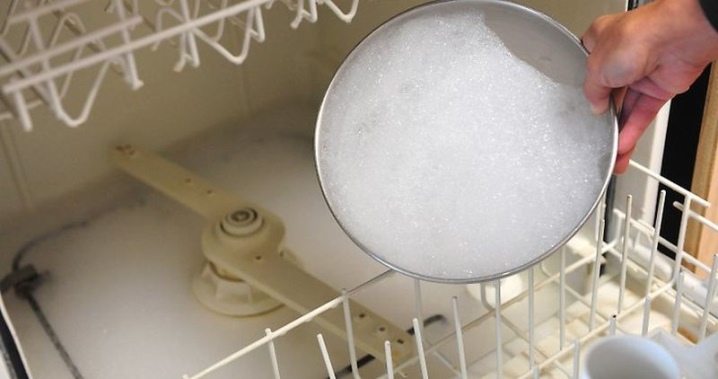
Doesn't heat water
Washing dishes with the help of special equipment implies the obligatory heating of water to a certain temperature. If this does not happen, the quality of the equipment will noticeably decrease.
When the washing machine does not heat up the water, only the heating element can be the source of problems. It will have to be replaced.
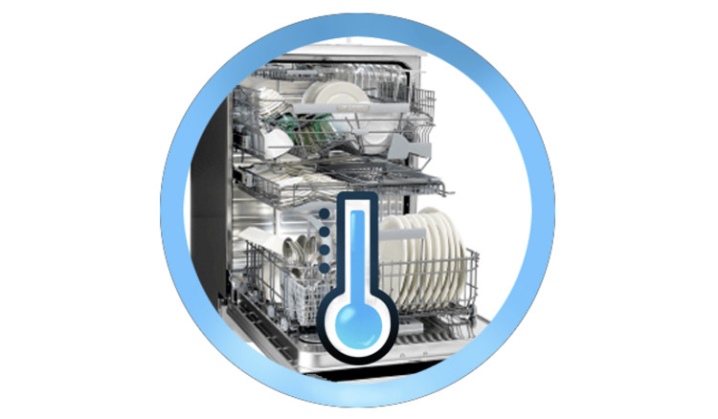
Flowing
The cause of a dishwasher leak is quite obvious. If water seeps out from the front, check the sash seals on the door. When liquid accumulates under the body of the equipment, it is worth checking the filters and nozzles for clogging, fixation tightness. If a leak occurs when the unit is off, you will have to pay attention to the filler valve. During operation, a puddle may form due to a leaky hose.
Almost all of these breakdowns can be repaired by yourself. It is much worse if the tank itself or the detergent drawer is leaking. In this case, only the replacement of the element is required, sometimes very expensive.


Door problems
When operating dishwashers, many users are faced with the fact that the door does not lock in the open position. By default, this function should be present for any brand of equipment. But sometimes it needs adjustment. If this is not done, the flap will automatically close, making it difficult to remove the contents from the tank.
Especially often owners of built-in appliances face such a problem. You can find adjusting elements on it near the hinges on which the door is hung. Here's a construct from:
- springs;
- cable;
- loops;
- plastic blocker.
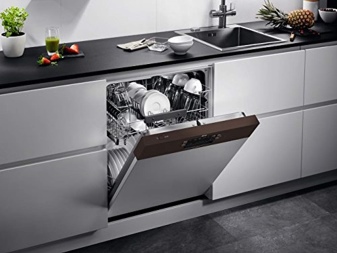
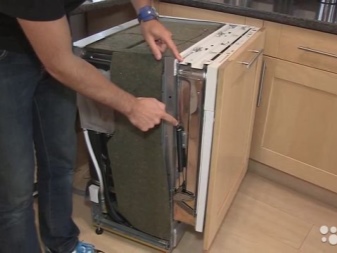
If the locking element is broken, the door will not lock in the open position. In this case, you will have to replace the cable or the entire system. In this case, the door will have to be completely disassembled.
Other signs of breakdowns associated with fixing the sash in a certain position will also require repair of this particular block. For example, a spontaneously opening, falling sash always indicates that a cable or spring has broken.
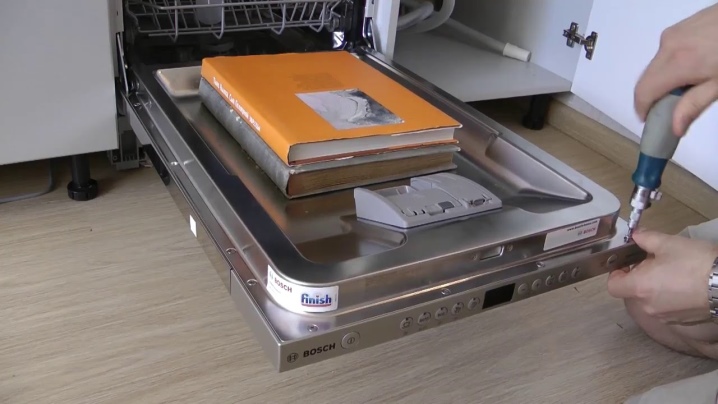
Prevention measures
In most cases, it is possible to prevent damage to expensive dishwashers simply by carefully studying the instructions for its operation. The frequency of cleaning the filters is always indicated there, a list of compatible detergents is recommended. It is optimal if basic preventive measures are applied after each use of the technique. This will avoid many unpleasant phenomena.
When cleaning the filter, the fine element is simply washed, having previously soaked for 10 minutes in a liquid SMS solution for dishes. It will be useful to rinse the grill that traps the coarsest particles, as well as the steel mesh behind it in this solution, and then rub it with an old toothbrush.
Overgrowing of sprinklers in the cooking chamber is a sure sign that it is time to refill the water conditioning unit. In this case, the sprinklers themselves will also have to be soaked in an aqueous solution of 9% table vinegar, then mechanically cleaned. Then they are washed with hot water.
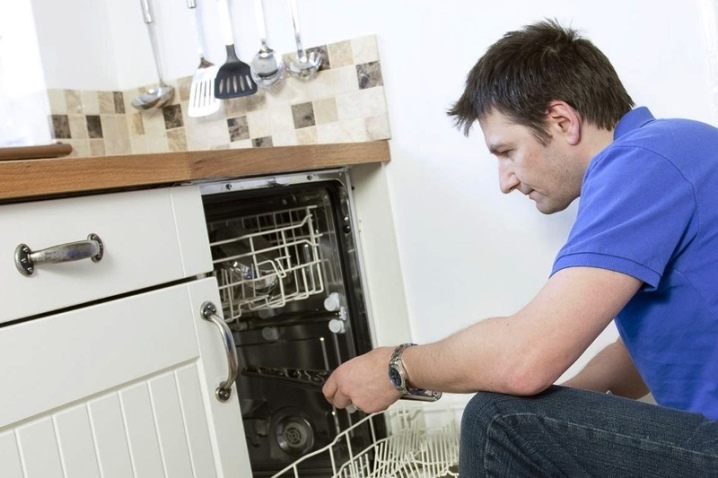
Watch the video on how to repair your dishwasher.













The comment was sent successfully.